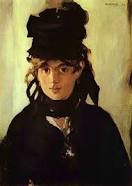Friends of Degas

Alfred Sisley (1839–1899) Sisley was a figurative landscape painter, born in Paris to British parents.

Mary Cassatt (1844–1926) Cassatt was an American-born woman, who later moved to Paris, where she joined the Impressionist painters.

Paul Cézanne (1839–1906) Cézanne was a painter from Aix-en-Provence. He is known for his landscape paintings and numerous versions of Mount St. Victoire. Cézanne also participated in Impressionist exhibits during his time in Paris.

Armand Guillaumin (1841–1927) Guillaumin participated in six of the eight Impressionist exhibitions and painted numerous scenes of Paris.

Édouard Manet (1840–1926) Manet is often referred to as the "Father of the Impressionists." He was a teacher for many in the Impressionist circle and led a movement to break away from narrow academic thinking.

Claude Monet (1841–1895) Monet is possibly the most iconic of the Impressionist group. Unlike many, Monet never strayed from the ideas of Impressionism, and he embraced Impressionist painting until his death in Giverny.

Berthe Morisot (1841–1895) Morisot was a French Impressionist painter. Along with Mary Cassatt and Marie Bracquemond, Morisot was known as one of the “Three Great Women” of Impressionism. Morisot was also the sister-in-law of Édouard Manet.

Camille Pissarro (1830–1903) Pissarro is possibly known more for his contributions to Post-Impressionism. His style bridged Impressionism and Neo-Impressionism, as he experimented with pointillism. Pissarro eventually rejected pointillism, but remained an influential figure for painters of the next generation.

Pierre-Auguste Renoir (1841–1919) Renoir was one of the original members of the Impressionist movement. Renoir, unlike many of his contemporaries, focused on painting people rather than landscapes. He painted numerous portraits and Parisian social scenes.